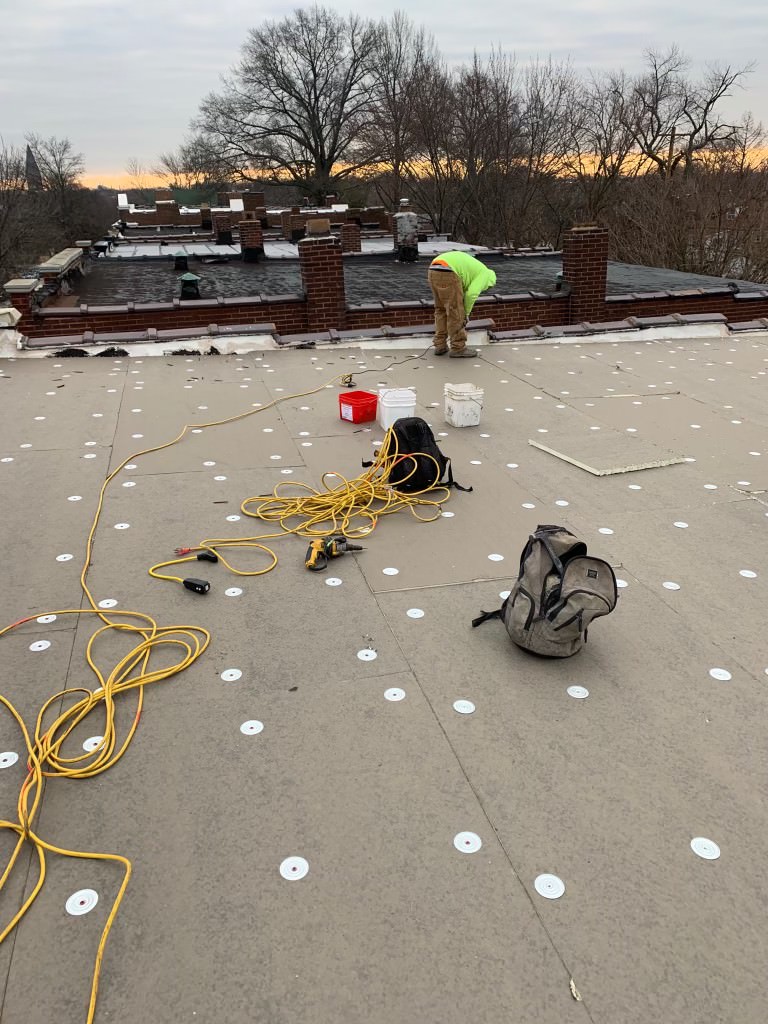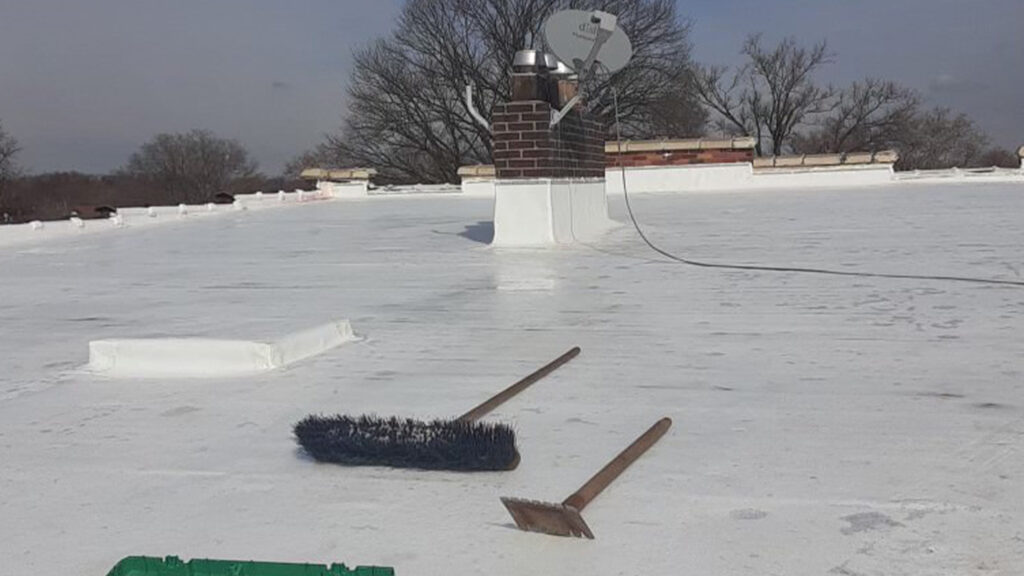
TPO Roofing
Home – Services
Roofing Services
TPO Roofing
Best solution for your house roofing
Call Anytime

Thermoplastic Polyolefin (TPO) is a single-ply roofing membrane that is made up of a single-layer of synthetics and reinforcing scrim that is used to cover flat roofs. TPO is one of the fastest growing commercial roofing systems out there and one of the most common types of roofs used by big commercial facilities. It also has some of the best energy savings for single-ply membrane roofing.
Single-ply membranes consist of sheets that are made of rubber and other synthetics. It can be ballasted, mechanically fastened, or chemically adhered to insulation making a layer of protection on a commercial building. TPO membranes are manufactured in sheets that are 10, 12, or 20 feet wide. These sheets are then rolled up and taken to the commercial facility.
Installation Process of TPO
The installation of TPO is straightforward. Once the existing underlayment is prepared, either by cleaning or removing the existing roof, the insulation is installed. There are three types of insulation that are available: polyisocyanurate (Polyiso), expanded polystyrene (EPS), and extruded polystyrene (XPS). The TPO membrane is then attached to the cover board with a bonding adhesive or by being mechanically fastened. Once the membrane is rolled out, the roofing contractor will then use a hot-air gun to hot air weld the seams together.
TPO has many advantages such as if properly installed and maintained, it can last 30 years. Another advantage is it allows customers to choose their preferred insulation type. Single-ply membrane roofing does not include insulation; therefore, customers have more options to choose from to insulate their building’s roof. TPO membranes are also Class A Fire-Rated which means they can achieve Underwriters Laboratories (UL) Class A fire resistance listings when fire retardant chemicals are added during the manufacturing process. Installation choices is another benefit of TPO. There are options for how a single-ply roof can be installed. For example, it can be secured directly to a roof deck, as well as attached with different adhesives. It can also be welded through heat in more problematic spots on a roof, such as areas where protrusions, projections, and chimneys are present. An additional advantage to a TPO roofing system is that TPO is resistant to corrosion and disintegration when it comes into contact with different materials. It is also resistant to mildew and algae, and it does not need power washing which makes it easy to maintain. Finally, TPO is typically white and highly reflective. This means UV rays and heat are reflected off the building, saving money during summer months due to decreased energy usage to cool the building’s interior.
Considering the price
When figuring out an estimate for how much a TPO roofing system will cost, there are factors to consider such as the roof condition, size, and access, as well as the insulation and membrane selection, installation options, roof protrusions/penetrations, warranty options, and the benefits of TPO. Although single-ply materials are a reasonably inexpensive material to use, considerations such as these need to be made to get the best material at a fair price.
